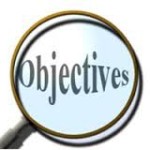“This workshop was well received
and we do want a return engagement.”
~Dr. Arthur Prancan, Preclinical Dean,
Touro College of Osteopathic Medicine
Faculty Development Workshop Purpose and Focus
- To develop the expertise (knowledge, skills, and dispositions) needed to explore, create, develop, articulate, apply, and assess learning objectives.
- To use learning objectives to focus student attention and readiness to learn.
- To explore ways of using learning objectives to enhance the teaching and learning process.
“I will look more critically at any objective I will see.
I have realized how simplified was my thinking
regarding writing objectives.”
~Piotr B. Kozlowski, MD, PhD, FGCAP,
Dean of Research, Professor of Pathology,
Touro College of Osteopathic Medicine, Harlem, NY
Overview
Creating and articulating learning objectives are essential components of a highly effective teaching-learning process. Developing and implementing this learned skill helps to keep instructors and their students focused and on task. It enhances teaching and thus learning. It has a major impact on the knowledge, skills, and attitudes students retain.
“Victoria didn’t just present
but created dialogue among faculty.”
~Esquire Anthony, DO, Instructor,
Touro College of Osteopathic Medicine, Harlem, NY
Top 11 Learning Objectives
By successfully completing this workshop, participants should be able to demonstrate their expertise in creating, articulating, applying and assessing learning/behavioral objectives. This will be evident as participants:
- Articulate the three domains (categories) of Learning Objectives.
- Determine and communicate the important and essential knowledge, skills, and attitudes students need to develop and demonstrate.
- Discuss the SMART Learning Objectives.
- Discuss the importance of Bloom’s Taxonomy: 6 Levels of Thinking/Knowing.
- Discuss how instructors and students may utilize Bloom’s Taxonomy.
- Visualize and articulate intended learning objectives.
- Explore ways to prioritize learning objectives.
- Discuss the 8 essential components (guidelines) of well-articulated learning objectives.
- Visualize and articulate the Teaching-Learning-Assessment Triangle.
- Paraphrase and discuss at least 5 of the 37 Highly Effective Teaching-and-Learning Guiding Principles, Tools, and Strategies.
- Paraphrase and discuss at least 5 of the 21 Highly Effective Assessment Guiding Principles, Tools, and Strategies.
Handouts
Titles
- Nomenclature: Learning Objectives Terms and Definitions
- Bloom’s Taxonomy: Levels of Thinking and Knowing
- Best Practices for Creating and Articulating Learning Objectives
- Quotations: Learning Objectives
- References and Resources: Learning Objectives
- Webliography: Learning Objectives
“This workshop was most helpful in letting me
think through how I need to prepare for my lectures,
deciding what things are important for students to know
and making sure they know the why…and how
they will be able to use/apply the learning.”
~Mariluz Henshaw, MD, PhD., Associate Professor,
Touro College of Osteopathic Medicine, Harlem, NY
“Victoria is an excellent listener.
She provides positive feedback and explains herself well.
She answers all questions with detailed feedback.”
~Barbara Capozzi, DO, CNS, Clinical System Director,
Touro College of Osteopathic Medicine, Harlem, NY
This faculty development workshop is available to serve as
Professional Development Hours.
Each participant, who successfully completes this
faculty development workshop,
will be awarded a “Certificate of Completion”.
Click to Contact Dr. Nesnick
or
E-mail: Victoria@VictoriaNesnick.com
or
Phone: (631) 889-2178

